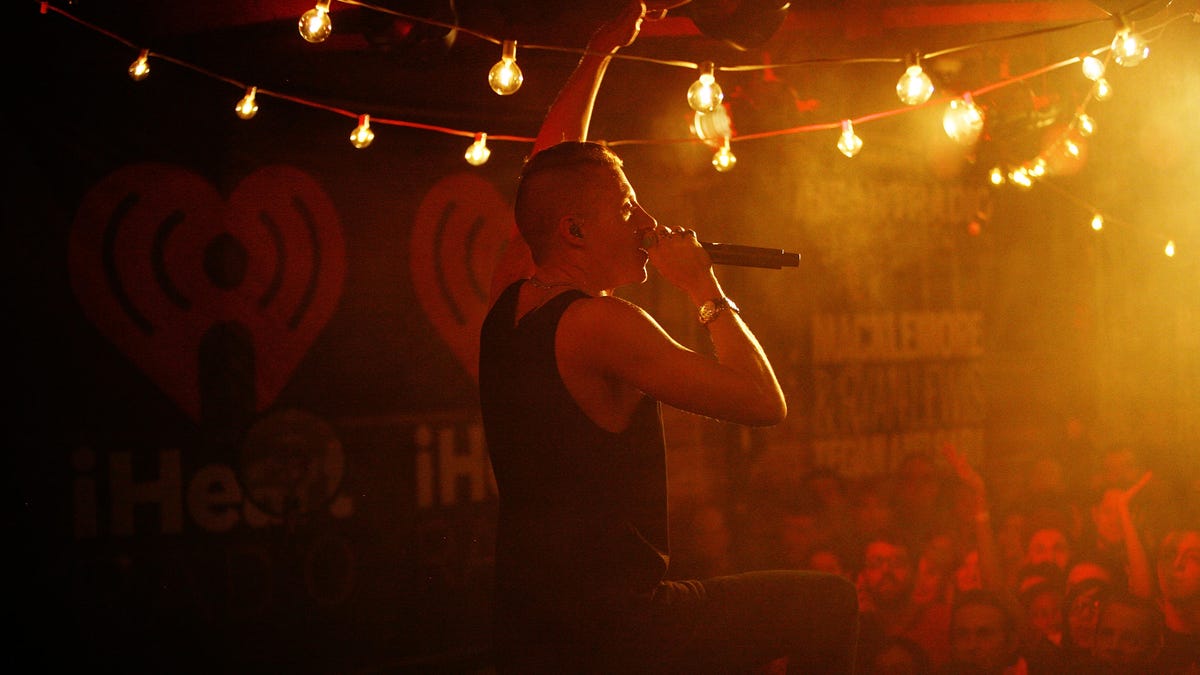iHeartRadio unveils Facebook, Samsung Bixby support at CES 2018
The streaming music service lines up a slew of tech integrations, including Facebook Messenger and Samsung voice assistant Bixby.

Macklemore performs at iHeartRadio's SXSW Showcase.
iHeartRadio has gone to bot.
The streaming music service unleashed a slew of product integrations announcements at CES Monday. Listeners will be able to access iHeartRadio through its first bot, a helper on Facebook Messenger; and Garmin's GPS running watch Forerunner 645 Music.
iHeartRadio, the digital arm of traditional radio giant iHeartMedia, has been extending itself deeper into technologies after launching a Spotify-like paid service All Access last year. After existing for years as a place to stream iHeart's terrestrial radio stations and listen to Pandora-like digital radio and podcasts, iHeart joined the intensifying battle to win streaming subscribers with its All Access $10-a-month service.
iHeartRadio announced the launch of its first bot, available on Facebook Messenger. People can ask the iHeartRadio bot to hear music based on a specific genre or geographic location. They can also ask for iHeartRadio recommendations to hear a randomly chosen selection from one of iHeartRadio's top 10 most popular stations. iHeartRadio, which has 7 million followers on Facebook, said more more capabilities are en route, like asking the iHeartRadio bot to create custom radio stations based on an artist.
With Samsung , iHeart integrated with Bixby, so users can ask by voice to play a specific Live or iHeartRadio Original radio station, create a Custom Artist station, or set a sleep timer for Bixby to stop playing iHeartRadio after a set amount of time. Bixby can also help users with simple tasks such as liking the song that's playing or skipping it.
iHeartRadio also said it will be available on Garmin's new Forerunner 645 Music, a GPS running watch with integrated music capabilities. iHeartRadio All Access members will be able to download playlists directly to the watch for offline listening.
In addition, the company updated its Roku app to expand its features. You could already stream iHeart through your TV with Roku, but the updated app gives listeners the service's full feature set. With the update, you can subscribe and, if you have All Access paid subscription, you can playback songs, save and replay songs from live radio, and play from a playlist.
The company also announced automotive updates with General Motors and Ford . With GM, iHeartRadio is now available on 4G LTE-connected Chevrolet, Buick, GMC and Cadillac, direct on digital dashboards. The iHeartRadio app will continue to be pre-installed on new GM vehicles throughout 2018.
And Ford will be the first to fully integrate with iHeartRadio's flagship mobile app, making all features available in car. Through an upgrade to the Ford SYNC AppLink, on-demand music functions of iHeartRadio All Access will be available in Ford vehicles, as will music replay, saving songs from live radio and more.
What happened to these big CES 2017 gadgets?: Where are they now?
CES 2018: Complete coverage from CNET

